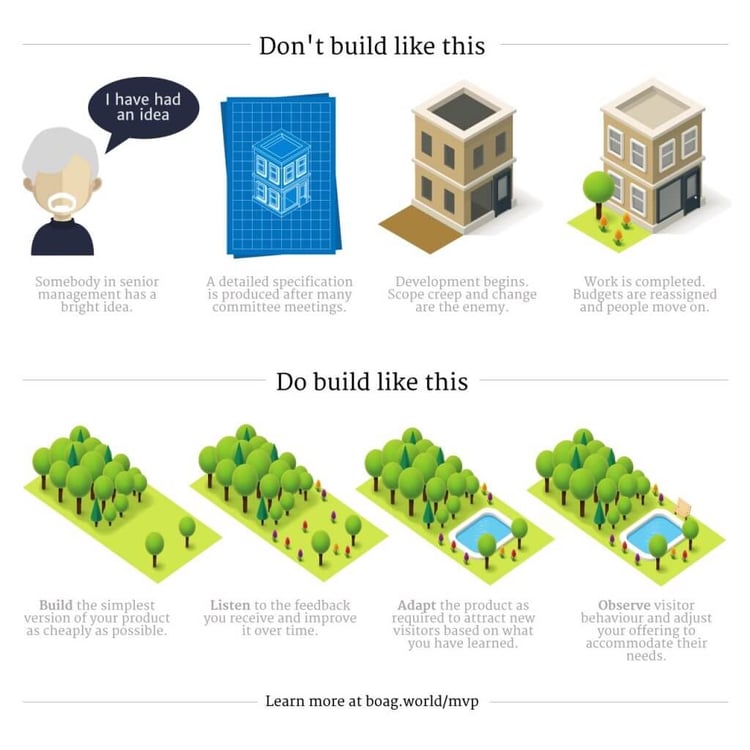Menu

I know that for both software companies and software users a road-map is a big deal. It clarifies what the development team is working on. It shows (prospective) customers which functional enhancements to expect going forward. Of course, we also have a road map for our job shop scheduling software just plan it. Indeed, we have a clear picture of the functional enhancements we will put in place next. Yet, as we moved into the new year, we've allowed ourselves to stop the execution of the road-map for a few days. Here is why we did this, what we're doing now, and what we're going to do next.
Let's get you some background. As NETRONIC Software (the company building just plan it), our focus is the development of Gantt chart software for visual scheduling. This is what we have been doing for more than 40 years. However, for a long time we have focused on building software development tools for other software developers. A few years ago, we started using our own tools to develop visual scheduling add-ins for one specific ERP system (Microsoft Dynamics NAV). This led us to the discovery of something interesting:
This encouraged us to invent and build just plan it.
The truth is, there are two different pairs of shoes. Developing a software that you sell to other developers is one thing. Developing a software that you sell to B2B end users is a completely different thing. Hence, the decision to go for just plan it was a fundamental decision for us.
The good thing is that we can build upon our long-term core competency. This is still Gantt charts for visual scheduling after all. But the "rest of the game" was an utterly uncharted territory for us. With this, I refer to specifying, developing, marketing, selling and supporting scheduling software for and with B2B end customers.
So we decided for an approach that would allow us to learn on the go. From a go-to-market perspective, we decided for an approach called the "minimum viable product" (MVP).

We launched just plan it in an MVP-way. This enabled us to get quick and substantial user feedback. We could thus continuously validate assumptions and enhance the software. This all happened based on the input of our early customers and users. The approach helped us re-fining the product's positioning. It also sharpened our view on what job shops and small make-to-order companies need when it comes to scheduling.
What I particularly like is that we were able to gain this feedback globally. In a short timeframe, just plan it has grown into a global market. We have customers in Northern and Southern America, all over Europe, in South East Asia as well as in Australia and New Zealand.
In that regard, I characterize the past 18 months as the phase in which we managed to achieve a validation. I call this the global confirmation of a "product/market fit". Also, 2017 brought some evidence that we started leaving this phase. It seems that we transition into what I call the "scaling phase". Let's look at some 2017 figures compared to 2016:
There is actually a bunch more KPIs that tell us one thing: let's get ready to scale. So literally, we are getting to the next phase with our software. We have to make the next big step.

And this is what I challenged the entire just plan it team with: how would it feel like, if we keep this momentum? If we win 10x new customers in 2018 compared to 2017? What, if the same happens again in 2019?
Honestly: this scared us a bit, and we decided to take a deep breath.
Let's assume that we are right and that our go to market has entered into its "transitional" phase. If so, it would be unreasonable to assume that we can continue as we did we before. If we get into a new phase, we need to re-think how we develop, market, sell and support. So, we currently are in a scrutinized review phase.
In terms of development and roadmap, this translates into a clear task and message. We’ve given the development team an “escape” from what we call the development sprints. We gave them room for creativity and analysis. We allowed them to start a three to four weeks process to make a 360° review of the entire software. Of the architecture, of the foundation and of how all puzzle pieces work together. Currently, the team's task is to identify (potential) weaknesses as well as opportunities related to the (technical) scale-ability of the software. We will complete this exercise in January, early February. Based on the outcomes, we’ll rework the timings of things we’ll build going forward.
We are aware that we'll have to functionally enhance just plan it in (at least) three areas:
Of course, our strong commitment is to build these features in 2018.
But based on the outcome of our "how prepared are we to truly scale?" exercise, there might be a new timing for the release of these. Then, we will be able to clearly look ahead, and give you a new road-map.

From time to time, it is good to get the head out of the operational dust and have a more strategic view. This is what we have now granted also to the development team. I know that delays are perceived as “bad”. However, I am conviced that this delay will be for the good in the mid-term. It will bring just plan it into its next phase, of which we all will benefit.
What do you think?
just plan it is a production scheduling software plus scheduling tools & best practices to help high-mix low-volume make-to-order manufacturers gain transparency and control over their shop operations. The software plus its methodology is used by thousands of people around the globe. They consistently achieve improved on-time deliveries, shorter lead times, and better utilization of their resources.
As just plan it is not just software, but a lot of processes and best practices, we recommend that you start with an exploratory meeting. If we agree that there is a fit between your requirements and our approach, we'll build a prototype for you.
Hence, it all starts with a meeting. Book that meeting now.
These Stories on Product news
Made with by NETRONIC Software GmbH (Copyright © 2019) Read our Privacy Policy & Terms of Service
Comments (2)